Sea level to 3640m – La Paz here we come…
Time for another border crossing… this time we weren’t going to cross the Andes – we were going to go up into the Andes, and stay in them. That’s because our destination for this border crossing was La Paz, Bolivia – which is high up in the altiplano, and at an altitude of 3640m.
We were starting from Arica, Chile – which is at sea level – so this journey gave us the highest chance of getting altitude sickness, due to the big difference between starting and finishing altitude.
The Chile/Bolivia border is at Tambo Quemado, at an altitude of 4680m – the highest point of the trip today.
Our bus was at 7am, and so it was still dark when we stumbled over to the bus station in Arica – we had stayed in a hostal across the road from the bus station on our last night in Arica – to make the early start a bit easier.
The bus itself was in not-too-bad condition, and it had a toilet on board… BUT this toilet was for URINATING ONLY! Yes, the conductor of the bus spent around 30 minutes telling us all the rules of the bus journey. Every sentence started with ‘Please, ladies and gentlemen’ – he was very polite – but it was VERY CLEAR that the MOST IMPORTANT RULE of all was ‘URINATING ONLY’ in the toliet.
We were a little nervous….. what if there was an emergency?!
The journey was going quite well, and we gradually ascended up into the mountains. We were given coffee and snacks, and the conductor came through the bus and took down everybody’s names, and handed out the immigration forms.
THEN – DISASTER STRUCK…. the conductor was furious…. someone had been to the toliet – and without putting too fine a point on it – they had done more than just urinate….
It wasn’t either of us – before you all jump to conclusions! The rant that followed from the conductor lasted at least 30 minutes… I’m not kidding….
‘Why? Why? I TOLD you the toilet was only for urinating. Who did it? Who was it? Whoever it was needs to own up and clean the toliet. There is no water on the bus. Now we have to stop and get water. I told you. WHY? WHY did you do that? Who was it? Does anybody know who it was?’
‘We are all different. I know that. Everybody has their own routines. BUT we are not children. We are not children. We are adults. Why? Who was it?’
‘I am not paid to clean the toilet. Why should I clean the toliet? I asked you not to use the toilet except for urinating. I told you very clearly. Why?’
And so on…. and so on…. it really was a bit surreal…CC and I tried to identify the culprit by seeing who looked the most guilty – but everybody had a very serene look on their face…
In the end, the bus pulled over into a layby, and the conductor got off and did something outside with some water – which we assume was to flush the ‘non-urine’ out of the toilet – and all was well again….
The ‘toilet’ incident was the most dramatic of the journey – other notable events were a passenger asking the bus to stop so that they could be sick outside, and the man across the aisle from CC giving her a pen and asking her to fill out his immigration form for him, as he was unable to read or write.
All of the excitement happened on the Chilean side of the border, and the border crossing itself was very similar to the Chile/Argentina crossing, with a joint processing building. Our hand luggage was searched, and upon finding a camera in my bag, and binoculars in CC’s bag – the customs officer asked if we were journalists?!?


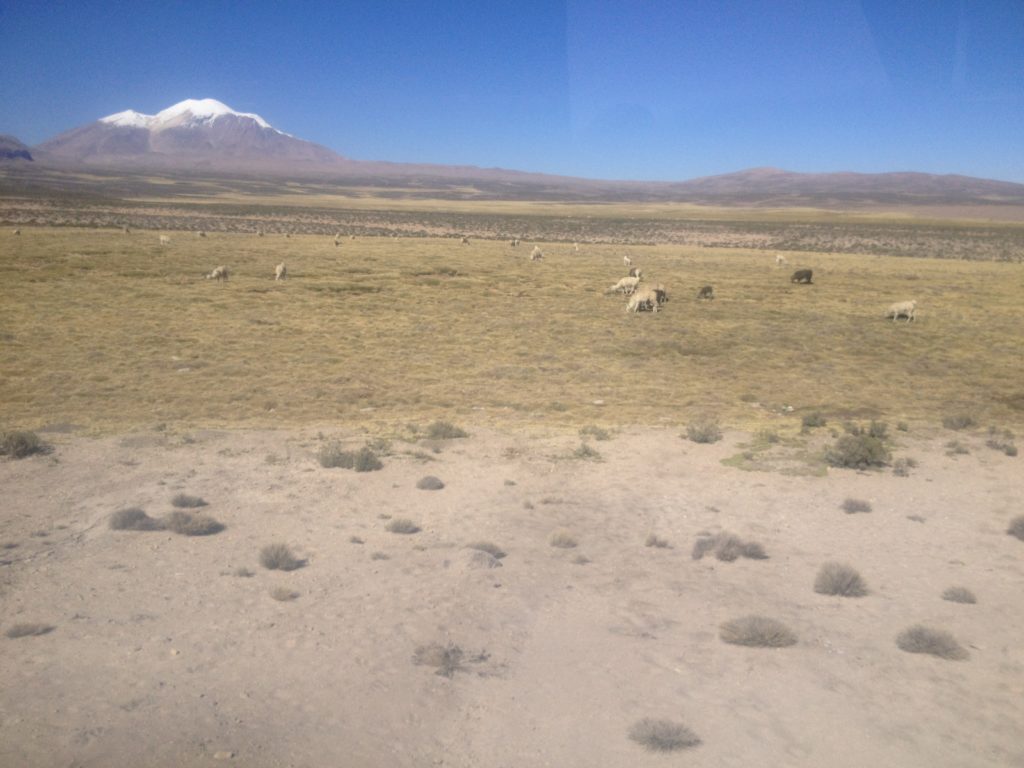

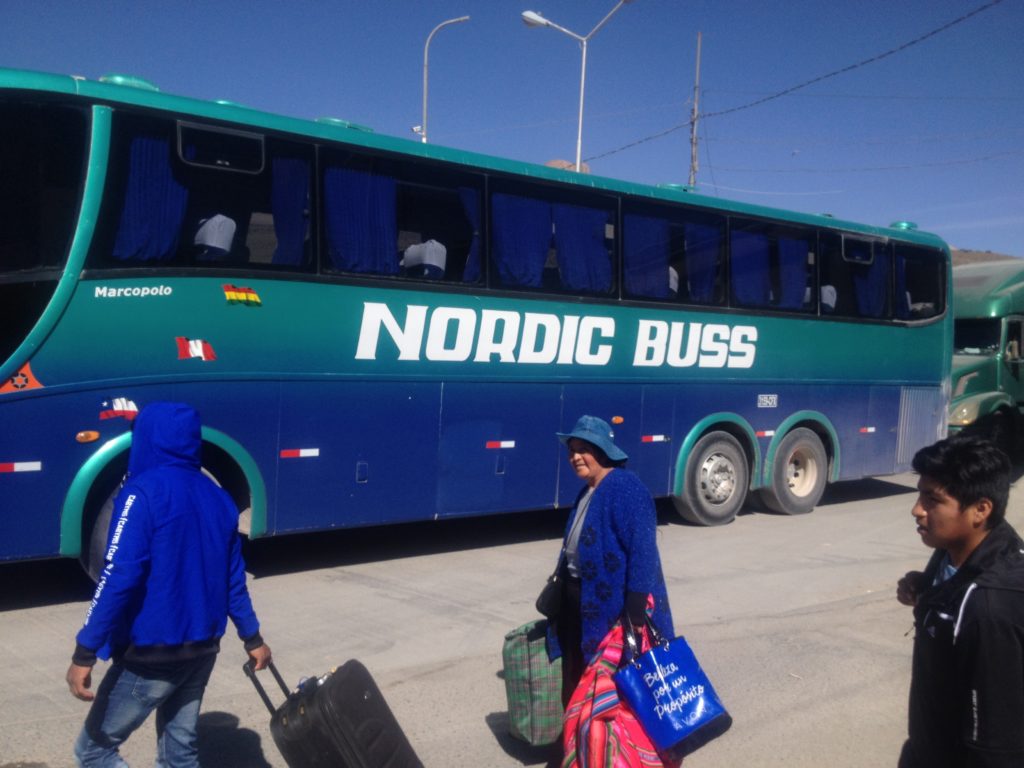
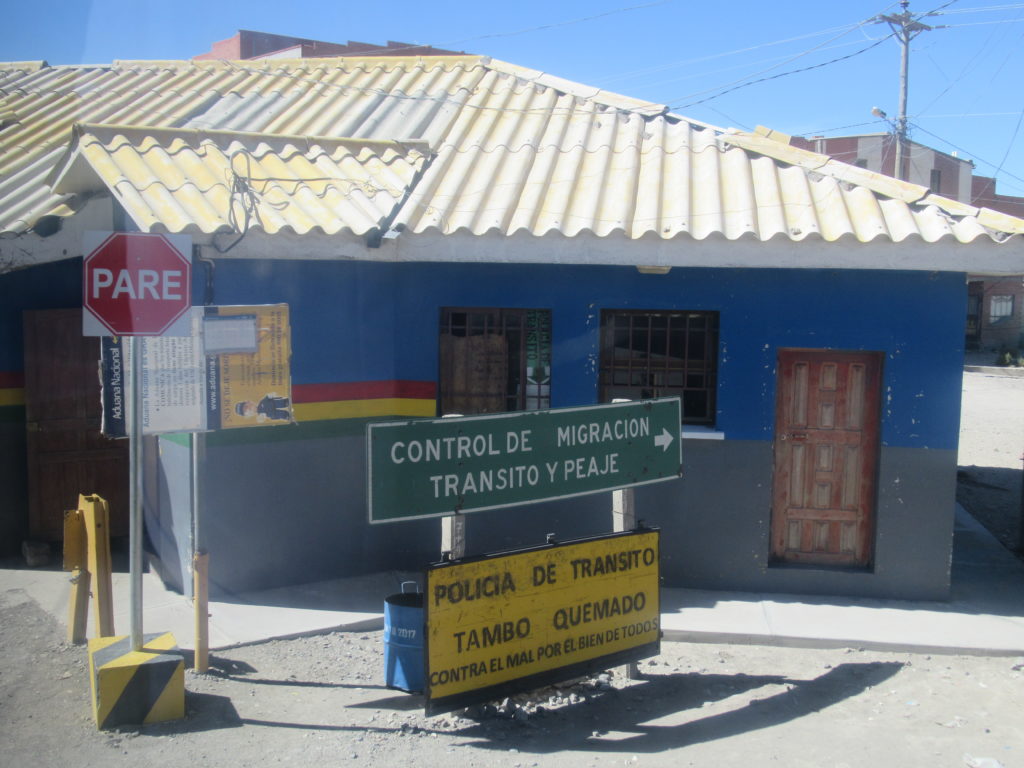
Once we crossed over to the Bolivian side, the buildings and towns were noticeably rougher than in Chile. Chile and Bolivia are the two neighbouring countries in South America with the greatest difference in GDP (Chlle is now supposedly the ‘richest’ country in South America, overtaking Argentina and Uruguay, and Bolivia remains the ‘poorest’)
The rest of the journey through Bolivia was mostly through the countryside, with similar altiplano scenery as on the Chilean side – but with a lot more farms and buildings.
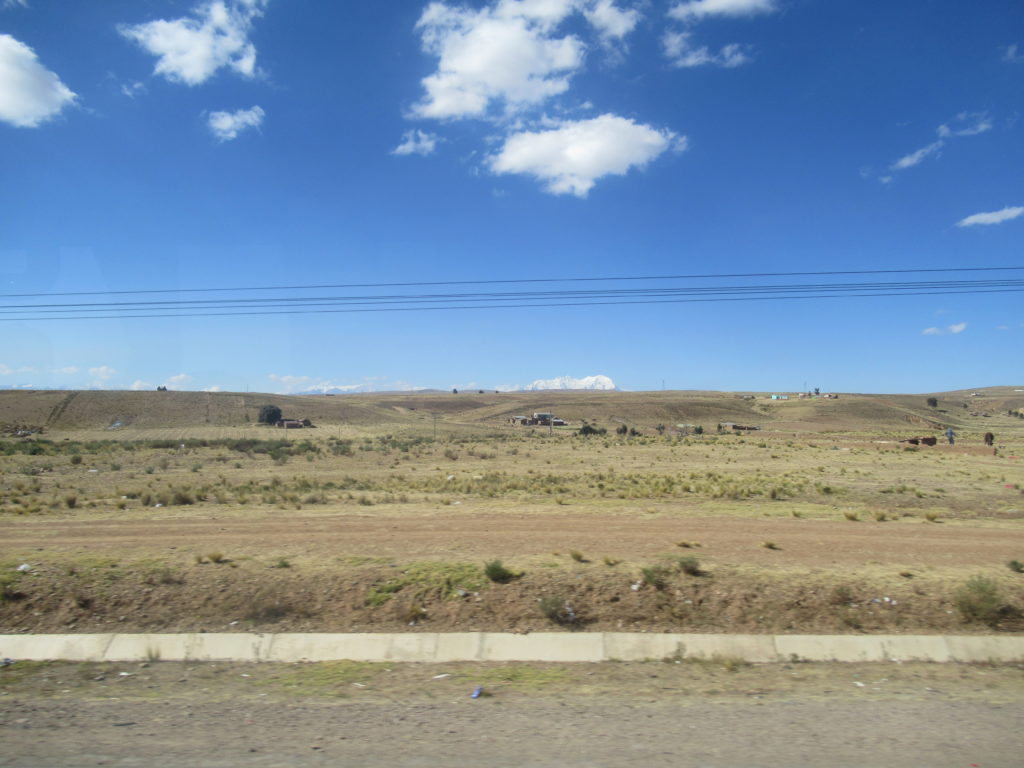
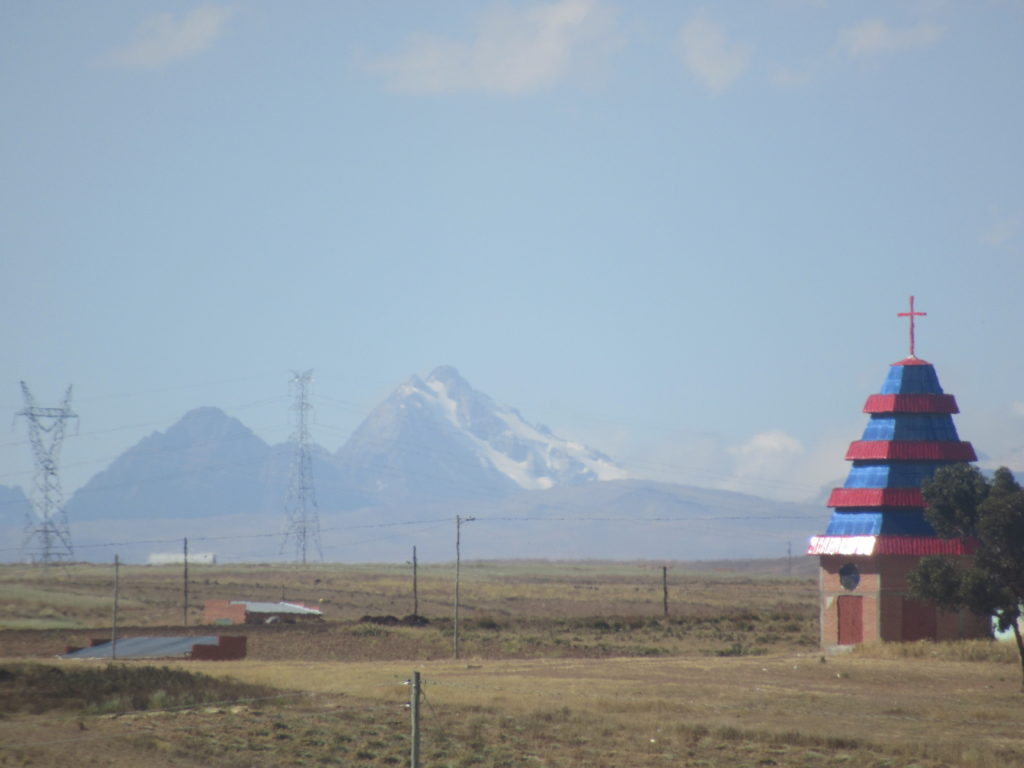
As we got nearer to La Paz, we could see Illimani Volcano on the horizon. Illimani is the symbol of La Paz, as it’s visible from all over the city (and beyond…). It is 6438m high, and is the 18th highest peak in all of South America!
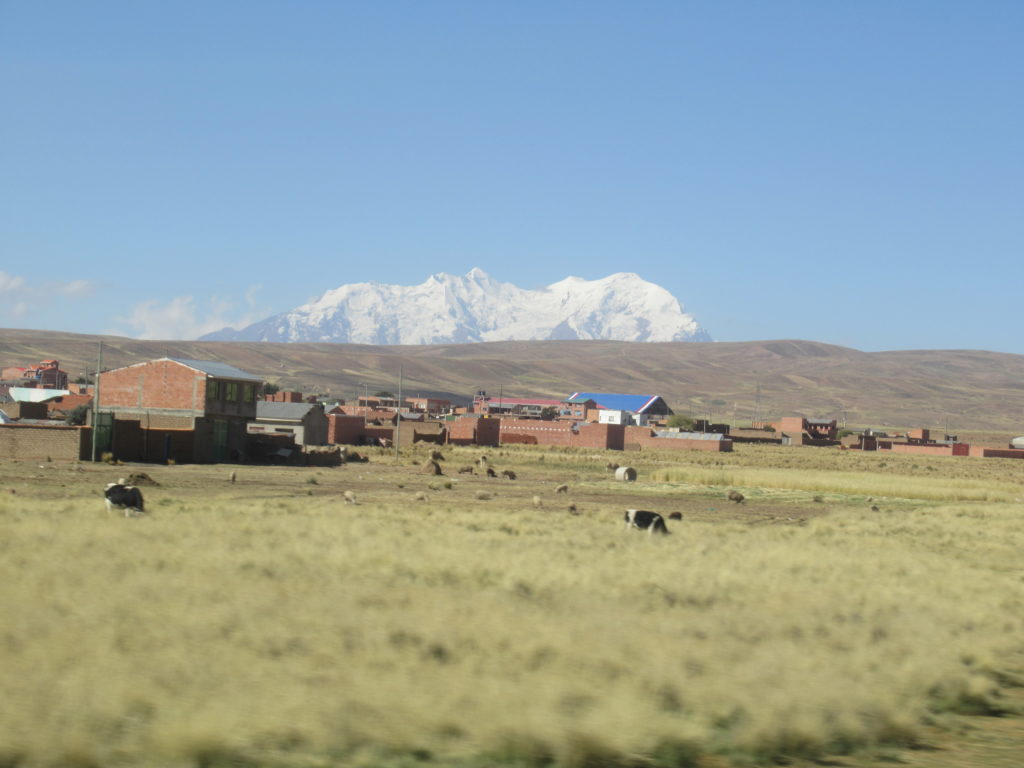
The road into La Paz from the altiplano direction first passes through El Alto. El Alto is pretty much connected to La Paz, but is considered a separate city. It has grown so fast, that it now has a population of around 1 million and is considered to be bigger than La Paz itself. It sits on the edge of a flat part of altiplano just above La Paz at an altitude of 4150m – and is considered the highest major metropolis in the world.
Going through El Alto, we passed street after street of red brick houses lined along dirt roads coming off the highway. It stretched on for miles and miles. We noticed that some street corners had scarecrow like dummies hanging from lamposts with signs around their necks – which was a bit creepy…. even more creepy when we found out that they are put there as warnings to thieves and other criminals – and the signs say that if you get caught stealing they will hang you or burn you to death. A lack of faith in the police has led communties to take the law into their own hands…
The next thing that we saw in El Alto, just before we started the descent into La Paz was Che Guevara! (Well a statue of him anyway…. it is made entirely of scrap metal)
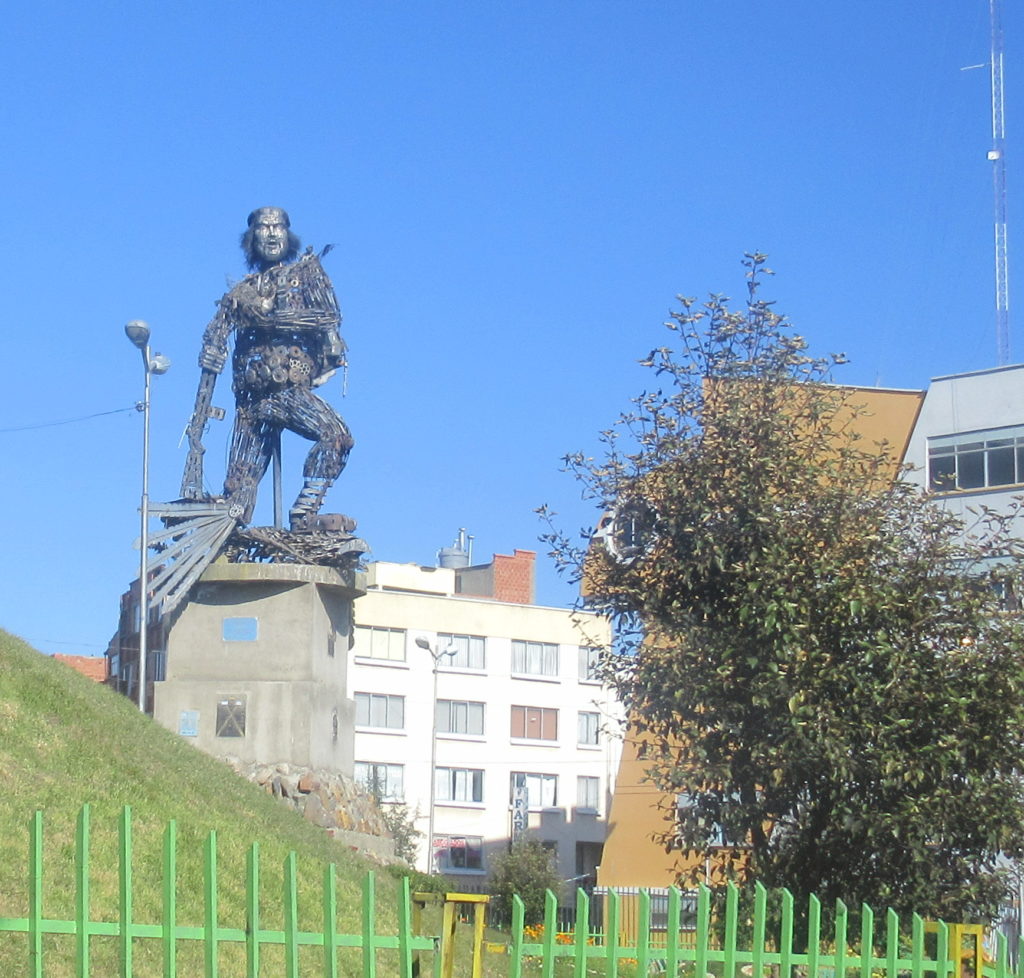
Shortly after the statue, we rounded a corner, and we got our first view of La Paz….our reaction was…. WOW!
It looked amazing – not like any other city that we had ever seen… a whole valley full of red-brick buildings of all shapes and sizes, surrounded by mountains on all sides. It was fascinating to look at from every angle. We took some photos out of the bus window – but they don’t really do it justice.
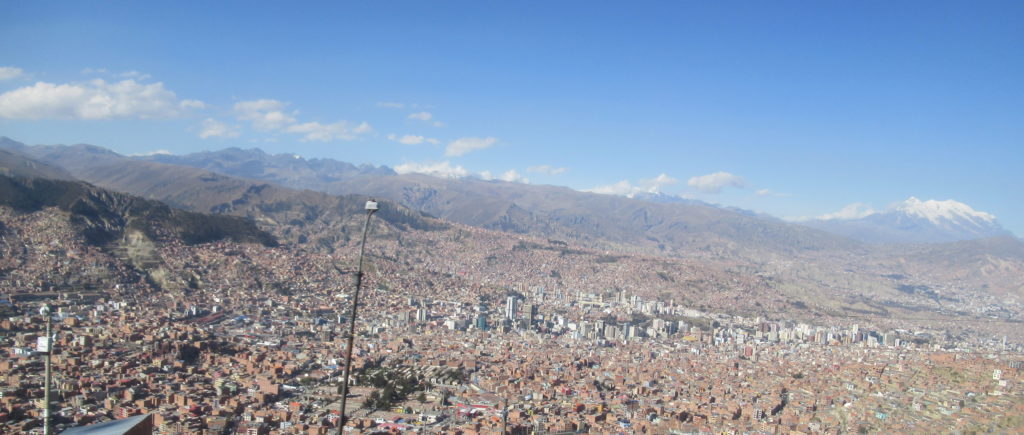
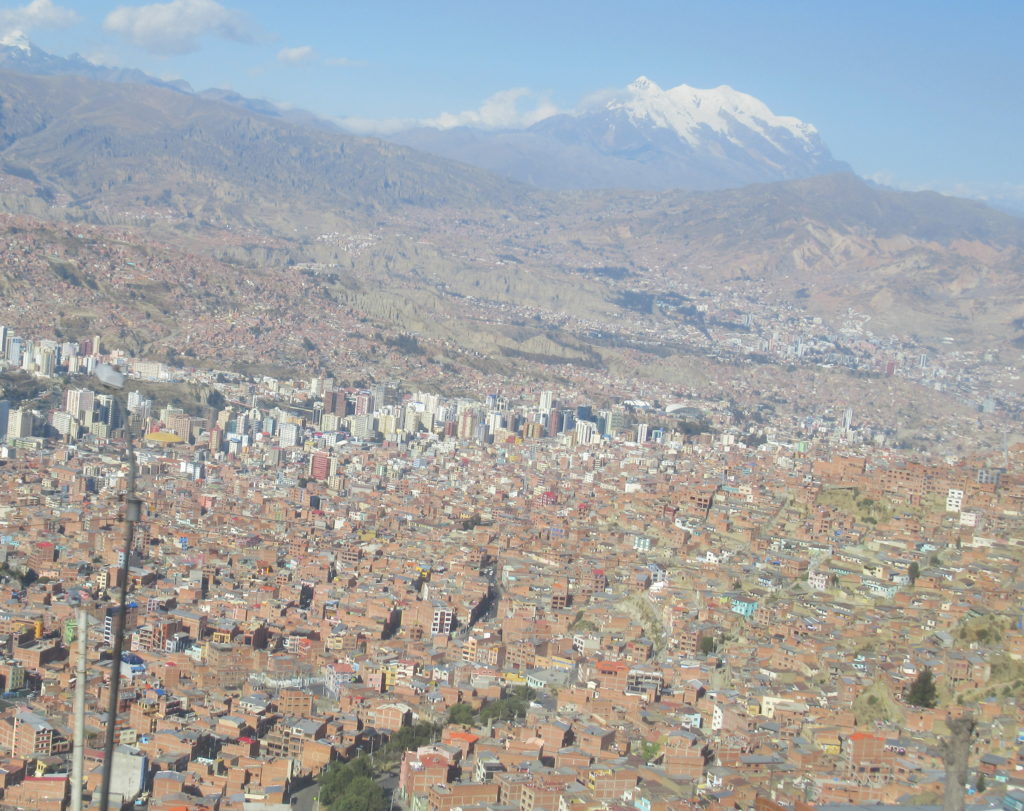
At around 4pm we pulled into the bus station in central La Paz – only 30 minutes behind schedule! Another border crossed, and we were now ready to explore La Paz…
